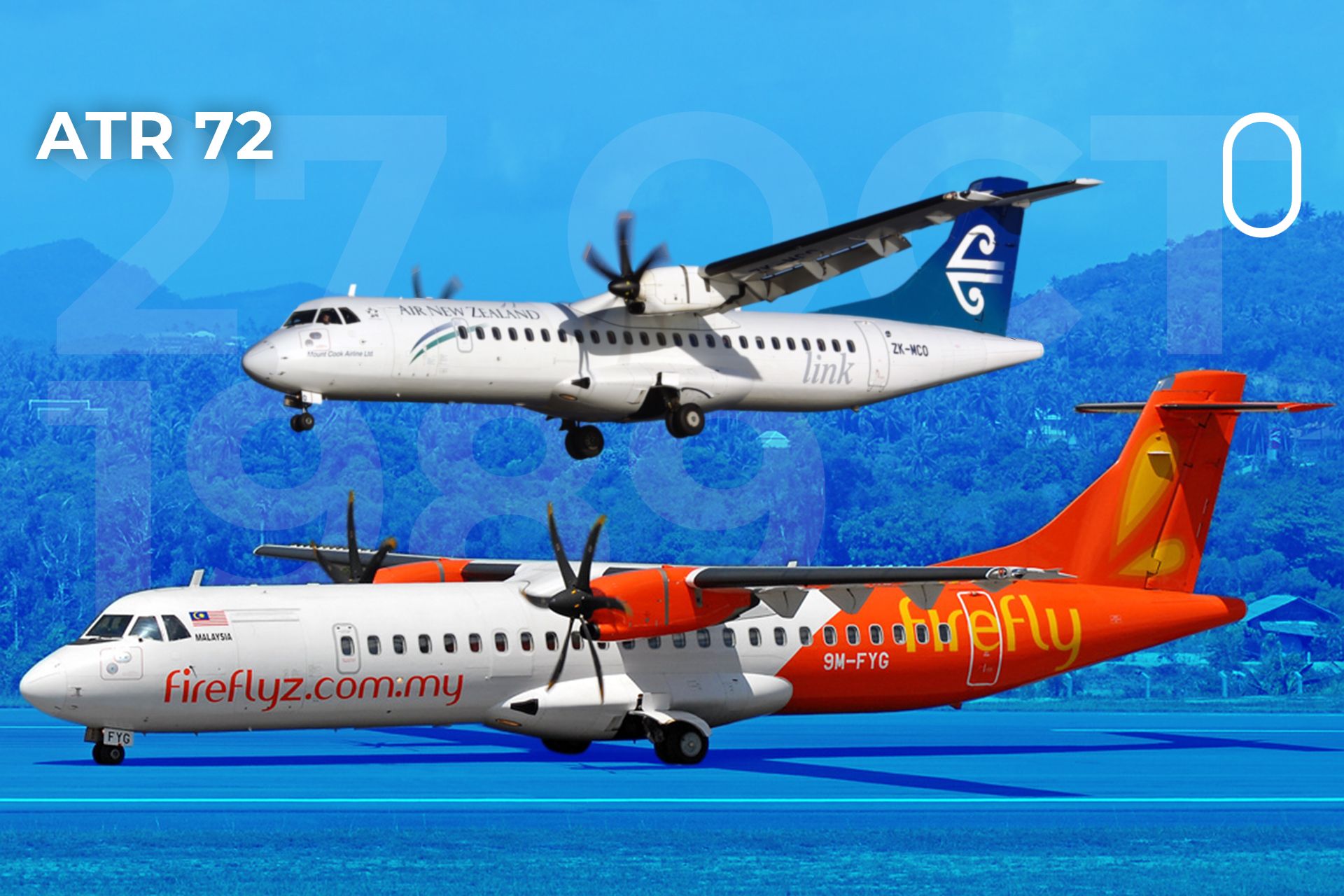ATR 72 Aircraft Overview: Atr 72 Plane

The ATR 72 is a twin-engine turboprop regional airliner manufactured by ATR, a joint venture between Airbus and Leonardo. It is a popular choice for regional airlines and commuter services, known for its fuel efficiency, short takeoff and landing (STOL) capabilities, and passenger comfort.
Design and Development History
The ATR 72’s development began in the 1980s, with the initial design based on the ATR 42, a smaller turboprop aircraft. The first ATR 72 prototype flew in 1988, and the aircraft entered commercial service in 1990. Since then, the ATR 72 has undergone several upgrades and modifications, resulting in a series of variants with improved performance and features.
Key Features and Specifications
The ATR 72 is a high-wing, twin-engine turboprop aircraft with a T-tail configuration. It features a pressurized cabin, seating for 68 to 78 passengers in a single-class configuration, and a maximum takeoff weight of 23,000 kg. The aircraft is powered by two Pratt & Whitney Canada PW127 engines, providing a maximum cruise speed of 470 km/h (298 mph). The ATR 72 is known for its excellent fuel efficiency, with an average fuel consumption of 1.6 liters per passenger per 100 km.
ATR 72 Variants, Atr 72 plane
The ATR 72 has been produced in several variants, each with unique characteristics and enhancements.
- ATR 72-200: The initial version of the ATR 72, introduced in 1990. It featured a maximum takeoff weight of 21,000 kg and a seating capacity of 68 passengers.
- ATR 72-210: An upgraded version of the ATR 72-200, introduced in 1996. It featured a higher maximum takeoff weight of 23,000 kg and a seating capacity of 72 passengers.
- ATR 72-500: A significant upgrade introduced in 2007. It featured a new wing design, improved avionics, and a higher maximum takeoff weight of 23,000 kg. The seating capacity remained at 72 passengers.
- ATR 72-600: The latest variant of the ATR 72, introduced in 2010. It features a more powerful engine, enhanced avionics, and a higher maximum takeoff weight of 23,500 kg. The seating capacity remains at 72 passengers.
ATR 72 Safety and Reliability

The ATR 72, like any aircraft, has a safety record that is subject to scrutiny and analysis. Understanding the aircraft’s safety performance requires examining its historical data, identifying any significant incidents or accidents, and understanding the maintenance procedures and safety protocols in place.
Safety Record and Incidents
The ATR 72 has a generally good safety record, but like any aircraft, it has been involved in incidents and accidents. To understand the safety performance of the ATR 72, it’s important to consider both the number of accidents and the severity of their consequences.
- Accident Statistics: According to the Aviation Safety Network (ASN), as of October 2023, there have been 63 accidents involving ATR 72 aircraft, resulting in 938 fatalities. This data includes hull-loss accidents, which are accidents resulting in significant damage to the aircraft. While this number might seem high, it’s important to consider the number of ATR 72 aircraft in operation and the years they have been in service.
- Notable Incidents: Some notable incidents involving the ATR 72 include:
- 2014 TransAsia Airways Flight 235: This accident involved an ATR 72-600 that crashed into a river in Taiwan, resulting in 43 fatalities. The investigation revealed that the pilot’s response to an engine failure was a contributing factor to the accident.
- 2015 Trigana Air Service Flight 267: This ATR 72-200 crashed into a mountain in Indonesia, killing all 54 passengers and crew. The investigation found that the accident was likely caused by a combination of factors, including bad weather and pilot error.
Maintenance Procedures and Safety Protocols
ATR aircraft, including the ATR 72, are subject to rigorous maintenance procedures and safety protocols to ensure their continued airworthiness. These procedures are designed to identify and address potential safety issues before they can lead to accidents.
- Maintenance Schedule: ATR aircraft follow a comprehensive maintenance schedule that includes regular inspections, repairs, and overhauls. This schedule is based on the aircraft’s operating hours and is designed to ensure that the aircraft remains in a safe and airworthy condition.
- Safety Management System (SMS): ATR has implemented a comprehensive Safety Management System (SMS) to proactively identify and manage safety risks. The SMS includes a system for reporting safety issues, investigating incidents, and implementing corrective actions.
- Training and Certification: ATR provides extensive training for pilots and maintenance personnel on the operation and maintenance of its aircraft. This training ensures that personnel are qualified and knowledgeable about the aircraft’s systems and procedures.
Atr 72 plane – The ATR 72 is a popular turboprop aircraft known for its versatility and efficiency, often utilized for regional and commuter flights. Notably, Minnesota Governor Tim Walz, a former teacher who ascended to the highest office in the state, minnesota tim walz , has advocated for the expansion of air travel within the state, particularly emphasizing the role of turboprop aircraft like the ATR 72 in connecting rural communities.
This focus on regional connectivity underscores the importance of aircraft like the ATR 72 in fostering economic growth and accessibility across Minnesota.
The ATR 72, a twin-engine turboprop aircraft, has been involved in several notable aviation incidents. One such incident, which garnered widespread media attention, was the disappearance of Malaysia Airlines Flight 370 in 2014. The event prompted extensive investigations and speculation, with renowned journalist David Muir providing in-depth coverage on ABC News.
The ATR 72 remains a popular choice for regional airlines due to its efficiency and versatility, despite the occasional incidents that have brought its safety into question.
